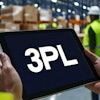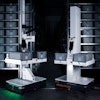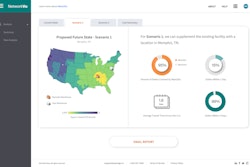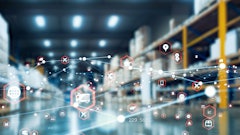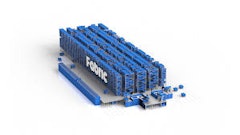
We have been living in the Coronavirus disease (COVID-19) era for more than a year, and with what we have seen, ongoing disruptions – many of them unpredictable – to supply chains will be part of our “New Normal.” The silver lining is that the crisis has exposed the inherent vulnerabilities of the traditional supply chain. It has highlighted why retailers need to act now to “correct” their supply chains, why evolving to an “intelligent” planning model is the pressing need of the hour and how intelligent planning can help to anticipate and mitigate future exigencies more efficiently – whilst enhancing profitability.
The intelligent planning process is different, reliant on deep data analysis, automation of certain processes, use of machine learning and collaboration throughout the supply chain. These are elements that before the pandemic may have been viewed by some retailers as optional or less relevant to the planning process. Without these elements, however, retailers will be challenged to achieve the levels of resilience, adaptability and flexibility that are now required.
Data: Core to the 21st century plan
Data is everywhere, but how you use it will determine how you can effectively impact your business. Today, we can access data in as close to real time as possible all along the supply chain. In real or near real time, we can see inventory data throughout the supply chain, demand data as well as other key data relative to goods movement, disruptions, etc. As the ability to access more data expands, using all of this data to improve supply chain planning and execution is increasingly the challenge many retailers face. Retailers must effectively use this data to adjust plans, execute contingencies and optimize the fulfillment of demand. Leveraging this data in an intelligent planning and execution environment will provide responsiveness and resilience that is needed in the face of ongoing disruption.
When it comes to planning, you should involve everyone that touches the supply chain both inside the company and externally as well – this will help you receive data in as real time as possible. This form of real-time data sharing between companies is becoming more prevalent. This also forces retailers to be smart about the data they receive and how they use it. With this influx of data, retailers will have to evaluate which data can be used in planning, which can be used in execution systems. They will have to assess the accuracy and importance of the data and apply weighting and context for the data to their systems. Continuously planning with external partners (suppliers, logistics partners, customers, etc.) on innovations will positively impact the supply chain and help with unexpected “disruptions.”
Unleash the power of AI and automation
Businesses tend to be short sighted when it comes potential disruptions with most focused on imminent threats. A survey conducted by The Institute for Supply Management found 75% of businesses had supply chain disruptions due to Coronavirus. And, 44% of companies didn’t have a business continuity plan in place, according to Infosys Consulting’s survey. This reaffirms the fragility of traditional supply chain models as well as the impact that unexpected disruptions can have.
Twenty-first century planning needs to be an ongoing priority, where the plan is constantly morphed and adapted in response to the dynamic landscape retailers face. Embedding artificial intelligence (AI) and machine learning into your planning systems can create an environment where you can receive suggested updates to plans on an ongoing basis.
Automation can be a critical driver of supply chain planning with two primary benefits. First, automation streamlines routine tasks, freeing up time to focus on exceptions and higher value add activities. Second, the automation process generates a great deal of deeper data insights and faster response to changes that points to better, more accurate planning priorities and decisions.
Integrating AI and machine learning into the supply chain provides the ability for more precise forecasting. AI and ML planning systems learn as they go. They will adjust the weighting of different causal factors and modify which forecast algorithms will be used on different items or categories based on constantly evaluating forecast performance. If you can improve the forecast accuracy and timeliness, you can take a great deal of error out of the supply chain and increase ultimate efficiency and productivity as well as service levels.
According to a report by Boston Consulting Group and Google, AI applications in consumer packaged goods (CPGs) can boost revenue growth by at least 10%. Successful deployment of AI technology for CPGs will be reliant on getting the talent, data and digital platforms strategy right. CIO-led, cyborg organizations that get the symbiosis right between the human and technological elements will have a clear competitive advantage. Undertaking large-scale deployment of innovative technologies may seem like a daunting mission for organizations but fortune favors the bold.
Collaboration creates resilience
The pandemic illuminated how interconnected supply chains are today. If interruptions occur in the supply chain, the ripple effect is felt far and wide and experienced by many suppliers and partners. Other recent events such as the Suez Canal blockage and the freeze in Texas that disrupted the supply of plastics are examples of how an unexpected event can be felt worldwide in many ways. As organizations rethink their supply chains and plan for greater efficiency, more resiliency and adaptability, it is clear they can no longer continue to be siloed. It takes the entire supply chain ecosystem working together to design an effective plan for the supply chain of the future. Supply chain leaders need to be continuously planning with suppliers, logistics partners and customers, sharing data and ensuring it’s in the correct format for the specific partner. A store planner needs different information in a different format than a transportation partner, for example. Together, supply chain partners can uncover waste, areas for improvement and innovation. By analyzing specific jobs and functions and the end-to-end process, supply chain partners can discover “ah ha” moments to make improvements that benefit everyone. The intelligent supply chain requires data sharing and collaborative planning, scheduling and communication, compliance and financial planning – all done together, making everyone better prepared to minimize disruptions. Supply chain partners should plan together and should continue to communicate in real time, all of the time.
Today’s supply chain has been fundamentally changed by the pandemic. For those retailers who can shift their mindset to think about supply chain planning differently, there is the opportunity to create something smarter, more innovative and more resilient. This will not happen, however, without proactive, intelligent planning along with partners across the entire supply chain. Rethinking how to use data, incorporating automation and collaboration are critical for a different supply chain planning approach. This is the big fix that must be tackled by retailers now before the next disruption occurs.

